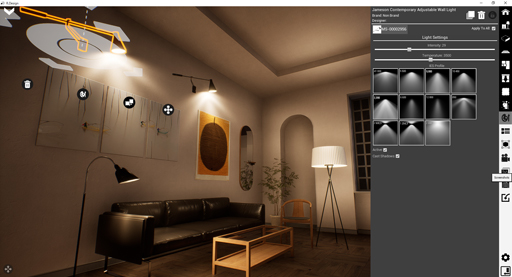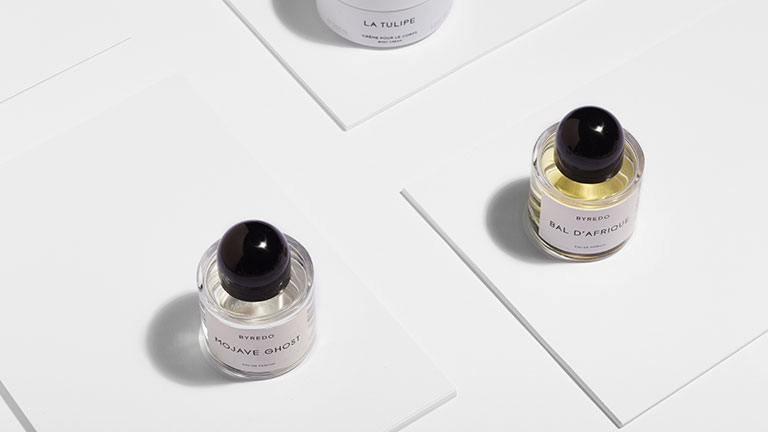AMOCC
“We started out as a furniture manufacturer and I am not an engineer, but with Salesforce I’m able to design solutions without knowing code.”

AMOCC takes an innovative, sustainable approach to selling furniture
AMOCC made its start in the furniture industry more than ten years ago as a manufacturer of high quality, made to order furniture. Founded in Japan, AMOCC moved its factory to Ho Chi Minh City, Vietnam in 2014, while continuing to sell to customers in Japan.
AMOCC’s goal has always been to produce beautifully designed and well crafted furniture and make this accessible to a large audience. Achieving this goal has meant stepping outside the conventions of the industry and creating a better model for manufacturers and consumers.
Manabu Imaizumi, CEO of AMOCC explained that consumers typically had three main options when it came to purchasing furniture: expensive, world famous brands; large chain stores with mass produced and low-cost items requiring assembly; and traditional retailers. AMOCC originally sold through these traditional retailers, but found fault with their business model which relied on mass marketing and discounts, while maintaining showrooms with lots of costs.
“Consumers today are inspired by Instagram, Pinterest, and other websites and have many, many ideas about what they want. However, while they dream of a beautiful living room or dining room, any traditional shop cannot display all that they need in showrooms. There is no room to display niche items. Only high turnover and normal design items tend to remain and, as a result, manufacturers need to produce similar products as others and price competition is severe,” said Imaizumi.
It is not easy for manufacturers like AMOCC to reach consumers either, which is why it’s creating its own path to market. Leveraging Salesforce, the company has designed an app where customers can explore furniture from various manufacturers. With features like 3D room visualisation supported by Unreal Engine, the app transforms the experience of discovering furniture.
Creating connections between consumers, designers, and makers
A key challenge for traditional furniture retailers is that they sometimes lack a relationship with their potential customers. Even before visiting shops, consumers may search for beautiful interior items. Once they decide to buy something, consumers will visit a shop, but there’s no strategy or attempts to re-engage with them—even after they’ve made a purchase. AMOCC wanted to do things differently and has developed its app, R.Design, to create connections between consumers, stylists, and makers like itself.
Developed using Salesforce, Heroku and Unreal Engine, R.Design lets consumers create their dream homes virtually with photo realistic visual quality, either on their own or with an interior designer. They simply choose a room or create a room with the room editor, and select from a range of furniture and furnishings to create a look that suits their home and tastes. With real-time rendering technology, the app achieves photo realistic visuals, but still enables users to dynamically change lighting and reflections, wallpapers, floors, and more. At the same time, the powerful product information management (PIM) system helps users to easily change furniture colours and configurations and enables them to see how changes like time of day and sunlight impact the finished look. AMOCC plans to release an AI solution in future to transform printed floor maps to 3D room data, which will take users' experience to the next level.
R.Design lets consumers and designers save and share their designs and collaborate on changes using a chat tool AMOCC developed using Heroku. The saved designs, selected products, users’ favourite catalogues, and more are captured in the database in Heroku, which integrates with Salesforce through Heroku Connect to help AMOCC and its partners build a 360-degree view of customers within Sales Cloud.
“This would be a great benefit for some of the local furniture manufacturers we partner with who produce beautifully designed items, but have no ability to directly communicate with potential customers. Providing furniture manufacturers and designers with a 360-degree view of their potential customers would help them to focus on creative works and customer communication, and empower them to build their fan bases,” said Imaizumi.
Driving innovation with low code development
While Unreal Engine enables the 3D visualisations for R.Design app, many of the underlying capabilities are supported by Salesforce and Heroku. With the Salesforce database platform, Imaizumi himself is able to design complicated data structures without knowing codes. The resulting data can then be pushed to Heroku using Heroku Connect.
Another benefit of using the Salesforce database platform is that it can be expanded through writing new programs. AMOCC has done this by working with Salesforce engineers who have written many Apex codes to enable new capabilities. The company has also used Ruby on Rails to develop multiple websites and APIs for the R.Design app. Heroku provides AMOCC with a platform to develop and deploy these quickly and has helped AMOCC avoid hiring server engineers.
“It’s incredible that a business person like me can lead and manage the whole development. I previously thought an IT project is something that should be led by an IT expert and needed to involve heavy documentation on system requirements and definitions,” said Imaizumi. “We’ve taken a totally different approach with this project which has been led by a small agile team, including myself and a small number of great engineers. We communicate in Slack everyday and there is no need for thick documents.”
Salesforce supports all the databases that sit behind the R.Design app, including its Product Information Management (PIM) database. This system contains detailed information on each product such as available colours, sizes, and fabrics—all of which feeds into the development of the 3D models. Heroku takes the product data from the PIM, transforms it into a readable format, and pushes it into the R.Design app. APIs are used to push the same data into the ecommerce platforms of AMOCC and its partners.
“The product information we have is truly complicated with details about the design and construction of products and how they’re associated with other objects. We could not manage that complexity without Salesforce,” said Imaizumi.
AMOCC’s partner manufacturers can access its PIM through Experience Cloud. There, they can register their product information by themselves so that they can showcase their products and 3D models to interior designers and general consumers. They are also able to sync the PIM with their ecommerce platform via APIs, and receive sales orders and customer details through Experience Cloud and manage processes like fulfillment.
AMOCC has formed an in-house 3D modeling team in Vietnam, who work with manufacturers on the creation of 3D models while also continuing to build and enhance R.Design with premium features for both consumers and designers.
The 3D modeling team and all others within the company use Slack to collaborate with each other and key business partners. The secure, channel-based messaging platform has replaced email as the preferred way to communicate, especially during the pandemic as teams worked remotely.
“People need the ability to have quick, casual discussions and get instant responses to their questions. If we were all in the office together, we might do that face-to-face, but since we are not, Slack has become the place that everyone goes to chat,” said Imaizumi.
Slack has changed the way AMOCC communicates with partners as well. For example, whenever AMOCC has a meeting with a key partner, it shares documents via Slack in advance. Then, once meetings are over, they use Slack to manage follow up.
AMOCC has also integrated Slack with several applications to centralise workflow. One of these applications is Rollbar which is used to detect application errors. With Rollbar now integrated into Slack, team members receive an instant notification via the messaging platform anytime an error is found.
One of the future opportunities for AMOCC is to further leverage insights from R.Design and customer’s purchases to re-engage with them in meaningful ways. For example, if a customer purchases a sofa, AMOCC can proactively reach out in the future to suggest changing the fabric. This could help customers extend the life of their purchases, thereby making them more sustainable.
“By using Salesforce we can maintain a relationship with our customers for another ten or twenty years and reach out to remind them that they don’t need to throw their sofa out, but can simply replace the fabric. Manufacturers can also hold onto the templates of the products they have which makes refreshing colours and fabrics less expensive,” said Imaizumi. “In this way, having a CRM is not only good for us, but good for consumers.”
Keep exploring stories like this one.
Questions? We’ll put you on the right path.
Ask about Salesforce products, pricing, implementation, or anything else — our highly trained reps are standing by, ready to help.













